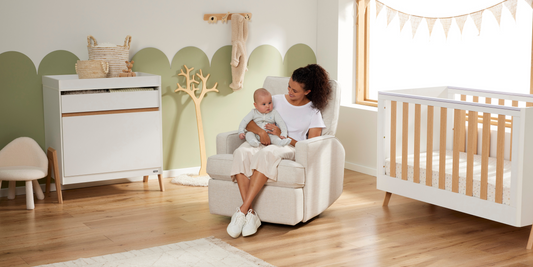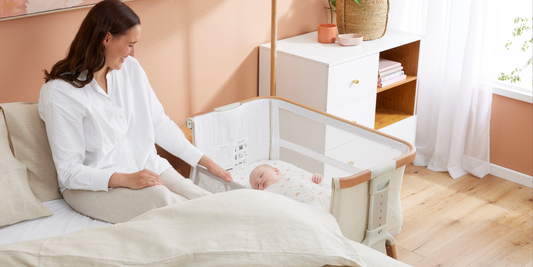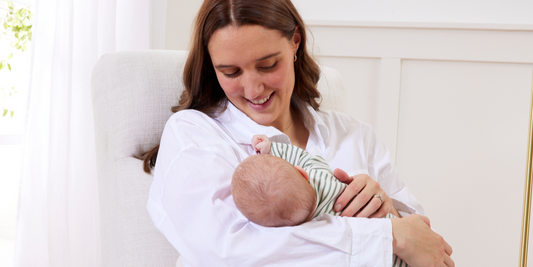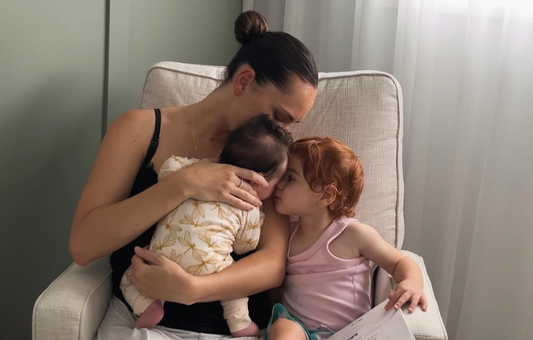Hello there, wonderful parents and parents-to-be, I have been questionably gracefully frolicking through this incredible journey of motherhood for just over a year now, and oh, what an adventure it has been! It sure is a journey and adventure, just like everyone tells you, filled with joy, an immeasurable amount of love, a photo library that's overflowing, and yes, its fair share of worries that tag along. Stepping into the world of motherhood has unfolded numerous lessons for me, drawing from my experiences as both a paramedic during the unpredictable nights and days, and now, as a mum trying to find her groove as a toddler mum to a very adventurous little guy who seems to hold no fear about anything.
Navigating the newborn phase can sometimes feel like you're trying to assemble IKEA furniture without the instructions—confusing, frustrating, but oh-so-rewarding when you get it right. On reflection, I can see how hard we were trying to find our groove as new parents, understanding what felt right for our family, discerning what worked and what didn't. Each step, each decision, was a learning curve, teaching us more about ourselves and our son than we ever imagined possible.
Through many conversations with new parents, one topic seems to continue to come to light, and that is safe sleep for babies, particularly how to dress newborns for sleep. I get it; I too found myself thinking about this every night before bed, wondering what to dress Sullivan in, wondering if he would be warm enough or too warm. Then, during the night, constantly putting a hand down his back to check. So much second-guessing around the topic of newborn sleep and what’s the safest practices. I do want to highlight that if you are in the newborn trenches trying to navigate this, or soon will be, I promise it gets easier, and you will become surer of yourself. Trust your instincts; they make us pay close attention to things for usually good reason.
I wanted to share some wisdom to help you find that delicate balance between keeping your newborn close in those early days to create that strong bond, as well as for the convenience of those overnight feeds and nappy changes, all whilst ensuring they are sleeping safely and soundly. Because the perfect sleeping space goes beyond aesthetics and comfort; it's about providing a safe and secure environment that promotes healthy sleep habits right from the start.
Back is best:
Just like how we all have that one side of the bed, babies need their special sleep position too—and it's on their back. This helps to ensure their airways are nice and open and protected should they have little spit-ups of milk throughout the night. As babies develop and learn to roll, you might find they develop a preference for sleeping on their tummies. Just like adults, babies will sleep where they are most comfortable. However, it is still recommended that at the beginning of the night when placed into their sleep space, they are laid on their back. Once your baby is showing signs of starting to roll, it's time to ditch the swaddle and let their arms be free.
Closeness counts: Having our newborns close to us, especially in those first few months, not only facilitates bonding, aids in convenience for those middle-of-the-night feeds and nappy changes but can also enhance sleep safety. It also allows for easy monitoring of your little babe throughout the night because I know you’ll be checking on them a few times, pinching yourself that they are real and here! Experts recommend that your new baby sleeps in your room for the first 6 months of their life. Keep in mind that every family's setup will be unique, so find what works and feels right for you, using these recommendations to help guide your decisions. Something that can help make room sharing a dream is a bedside co-sleeper, like the CoZee Breeze Plus Bassinet. Co-sleepers are an absolute game changer. The CoZee Breeze Plus enables you to have your baby within arm's reach for said feeds and nappy changes, and I love the transparent sides so you can very quickly peep on bub for some reassurance throughout the night. It can be attached to the side of your bed with the side rail lowered, so you can easily get them in and out without having to get out of bed…genius.
A bare necessity: Creating a minimalist sleep space isn’t just chic; it's safe. So, whilst I know all those soft toys your baby will be gifted are beautiful and treasured, they are best kept out of your baby's sleep space whilst they are sleeping in it. All they need is a fitted sheet on their mattress and perhaps a mattress protector underneath for those accidental explosions or little spit-ups, something that has been thought of and included in the CoZee range. If you are worried about your baby being cold while they are sleeping, you can pop a light blanket over them, ensuring it is tucked tightly under the mattress and it only reaches the height of their chest so they can't accidentally wriggle down or pull the blanket up. Their sleep space should stay bare until about 7 months old, where you can introduce a comforter if that is something you wish to do.
A firm and snug space: Why firm, you ask? Imagine sleeping on a marshmallow. Sounds dreamy, but swap to baby context, and it’s a big safety risk. This is the same for soft surfaces such as beanbags, loungers, and pillows. Experts state that babies need a supportive surface to ensure their little lungs can breathe easily and to keep their little bodies in just the right position. A firm mattress ensures no unwanted dips or soft spots can disrupt your baby’s breathing or sleep. And why flat? This isn’t just about preference; it's about providing a stable environment that supports their delicate spinal development and ensures they remain in a safe sleeping position throughout the night (not accidentally rolling). While we want to make sure the mattress is flat and firm, we also need to make sure it’s a snug fit in their cot or bassinet, without any gaps. I love that the iL Tutto Fuori and Hygge cot mattresses embody these exact safety principles, whilst providing the perfect balance between firmness for support and softness for comfort for our sleeping babes. Likewise, the CoZee Breeze Plus bassinet prioritizes safety without compromising on comfort. A standout feature I particularly love about the CoZee Breeze Plus is its adjustable heights and the option to set one end at an incline. This can be so helpful for our little refluxy bubs and is far safer and aesthetically pleasing than propping one end up on some books (hello, yes, I’m speaking from personal experience).
Dressing for the occasion: Figuring out how to dress your baby for bed can seem like a puzzle that I know us new parents stew over, especially when considering room temperature and not wanting to over or underdress. That’s the goal, isn’t it, trying to keep them comfortable yet not too hot and not too cold. But how do I master that, you ask… Firstly, let's talk about the ideal room temperature. There are measures we can implement to ensure our babies are kept comfortable without needing to pile on lots of layers to keep them warm. If you opt to use a newborn swaddle sleeping bag, which might I add are so convenient, each brand will typically give a guide for how best to dress your baby depending on the different tog ratings and room temperature. This takes the guesswork out of it, however, there might be a buffering period of trial and error to get the sweet spot and that’s okay, you’re doing great!
Remember, every baby is unique, and what works for one family may not work for another. These tips are here to guide you toward creating a safe sleep environment for your little one. Listen to your baby and trust your instincts; you know your baby best. Enjoy every cuddle, every late-night feed, and even those moments when sleep seems like a distant dream. I promise these moments are fleeting, and before you know it, your little one will be on to the next big adventure.
Sending you all the love, strength and a few extra coffee beans if needed, as you navigate this beautiful, sometimes challenging, but always rewarding journey of parenthood.









